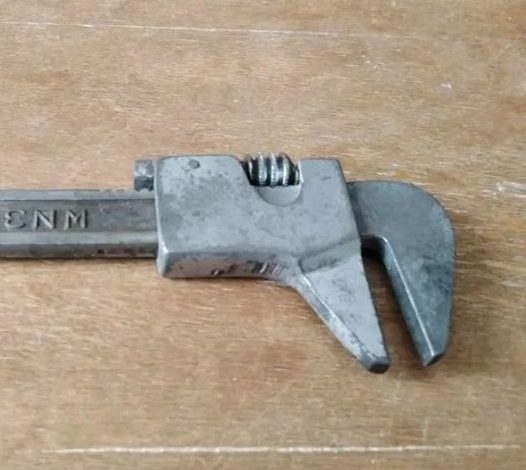The Adjustable Wrench: A Versatile Tool for Every Toolbox

ADVERTISEMENT
The Adjustable Wrench: A Versatile Tool for Every Toolbox
The adjustable wrench is one of the most versatile and indispensable tools found in toolboxes around the world. Known for its ability to adapt to various sizes of nuts and bolts, the adjustable wrench is a favorite among both professionals and DIY enthusiasts. This simple yet ingenious tool has been a staple in the world of mechanics and repairs for over a century, and its design continues to evolve to meet modern demands.
What Is an Adjustable Wrench?
An adjustable wrench, also known as a crescent wrench or adjustable spanner, is a tool used to tighten or loosen nuts and bolts of different sizes. Unlike a fixed wrench, which fits only one size of nut or bolt, an adjustable wrench features a movable jaw that can be adjusted to fit a wide range of sizes. This makes it an incredibly versatile tool, as one wrench can replace an entire set of fixed-size wrenches.
The adjustable wrench is typically made from durable materials such as steel or chrome vanadium, ensuring it can withstand the high pressures and stresses encountered during use. The handle is usually long enough to provide ample leverage, while the adjustable jaw is controlled by a screw mechanism that allows precise adjustments.
History of the Adjustable Wrench
The adjustable wrench has a fascinating history that dates back to the 19th century. The first patent for an adjustable wrench was granted to English engineer Richard Clyburn in 1842. However, it was the Swedish inventor Johan Petter Johansson who improved upon the design and created the modern adjustable wrench in 1891. Johansson’s design included a worm screw that allowed for easier and more precise adjustments, a feature that remains integral to the tool’s design today.
ADVERTISEMENT
In the United States, the Crescent Tool Company popularized the adjustable wrench, leading to the tool commonly being referred to as a “Crescent wrench.” The name stuck, and even today, many people use “Crescent wrench” as a generic term for any adjustable wrench, regardless of the brand.
Types of Adjustable Wrenches
There are several types of adjustable wrenches available, each suited to different tasks and environments:
- Standard Adjustable Wrench: The most common type, featuring a straight handle and a flat, movable jaw. It’s suitable for a wide range of applications, from automotive repairs to plumbing.
- Pipe Wrench: A variation of the adjustable wrench designed specifically for gripping and turning pipes. It has serrated jaws that provide a better grip on rounded surfaces.
- Plumber’s Adjustable Wrench: Also known as a basin wrench, this type features a long handle and a swivel head, making it ideal for reaching tight spaces, such as under sinks.
- Monkey Wrench: An older type of adjustable wrench with a wider jaw opening. It’s less commonly used today but is still favored by some for heavy-duty applications.
- Self-Adjusting Wrench: A newer innovation, this wrench automatically adjusts to the size of the fastener, eliminating the need for manual adjustments.
How to Use an Adjustable Wrench
Using an adjustable wrench is straightforward, but following a few key steps ensures you get the best results and prolong the life of your tool:
- Select the Right Size: Begin by adjusting the jaw to fit the nut or bolt you’re working with. The jaw should be snug but not overly tight, as this could damage the fastener or the wrench.
- Position the Wrench: Place the wrench on the fastener so that the fixed jaw is on the side you will be applying pressure to. This helps distribute the force evenly and reduces the risk of slipping.
- Apply Pressure: Use steady pressure to turn the wrench. If the fastener is particularly tight, you may need to use additional force or leverage, but be cautious to avoid stripping the fastener.
- Re-Adjust if Necessary: As you work, the fastener may become loose or tight. Readjust the wrench as needed to maintain a secure fit.
Benefits of Using an Adjustable Wrench
The adjustable wrench offers numerous benefits that make it an essential tool for any toolkit:
- Versatility: The adjustable jaw allows the wrench to fit a wide range of fasteners, reducing the need to carry multiple fixed-size wrenches.
- Convenience: With an adjustable wrench, you can quickly switch between different sizes of nuts and bolts without changing tools, saving time and effort.
- Cost-Effective: Investing in a high-quality adjustable wrench can save money in the long run, as it can replace several individual wrenches.
- Portability: A single adjustable wrench takes up less space than a set of fixed wrenches, making it easier to transport in a toolbox or tool belt.
Caring for Your Adjustable Wrench
To keep your adjustable wrench in good working condition, regular maintenance is important:
ADVERTISEMENT
- Clean After Use: Wipe down the wrench after each use to remove dirt, grease, and debris. This prevents build-up that can affect the movement of the jaw.
- Lubricate the Screw Mechanism: Periodically apply a light oil to the screw mechanism to ensure smooth operation and prevent rust.
- Check for Damage: Regularly inspect the wrench for signs of wear or damage, such as cracks or deformations. Replace the wrench if it shows significant wear to avoid accidents or tool failure.
- Store Properly: Store your adjustable wrench in a dry, cool place to prevent rust and corrosion. Consider hanging it on a pegboard or storing it in a tool chest.
Conclusion
The adjustable wrench is a versatile and essential tool that has stood the test of time. Whether you’re a professional mechanic, a plumber, or a DIY enthusiast, having a reliable adjustable wrench in your toolbox ensures you’re prepared for a wide range of tasks. Its adaptability, convenience, and durability make it an invaluable tool for both simple and complex jobs.
Understanding how to properly use and care for your adjustable wrench will not only make your work easier but also extend the life of the tool. So, whether you’re tightening a loose bolt, working on plumbing, or assembling furniture, reach for your adjustable wrench and experience the difference this timeless tool can make.



